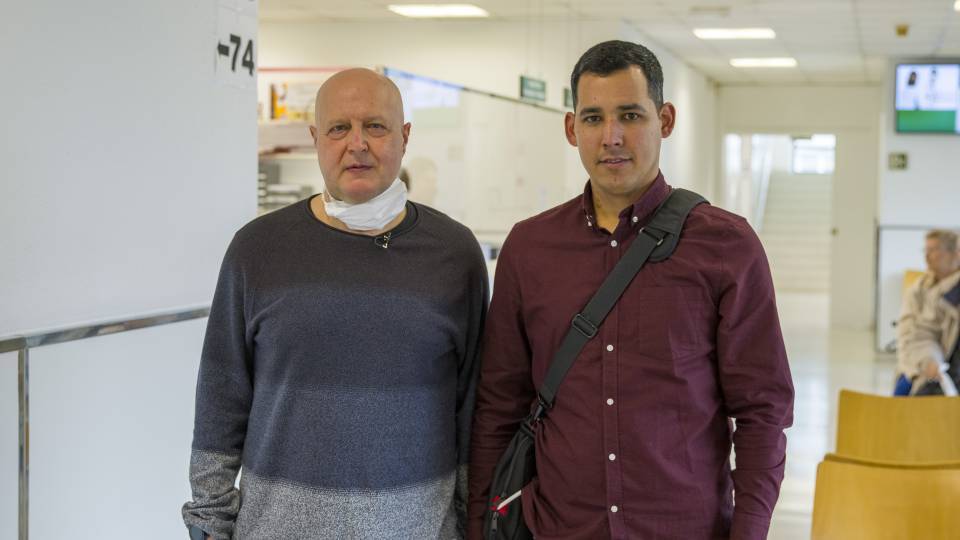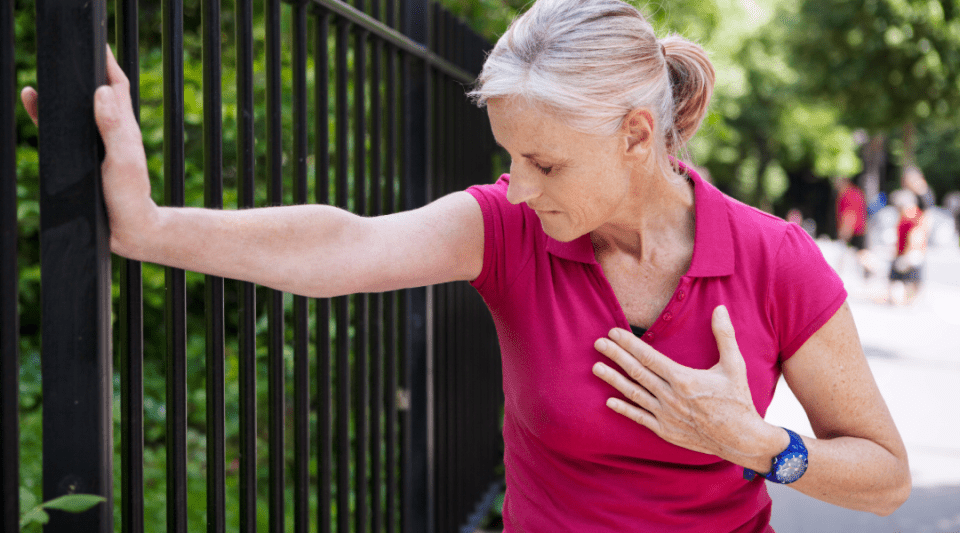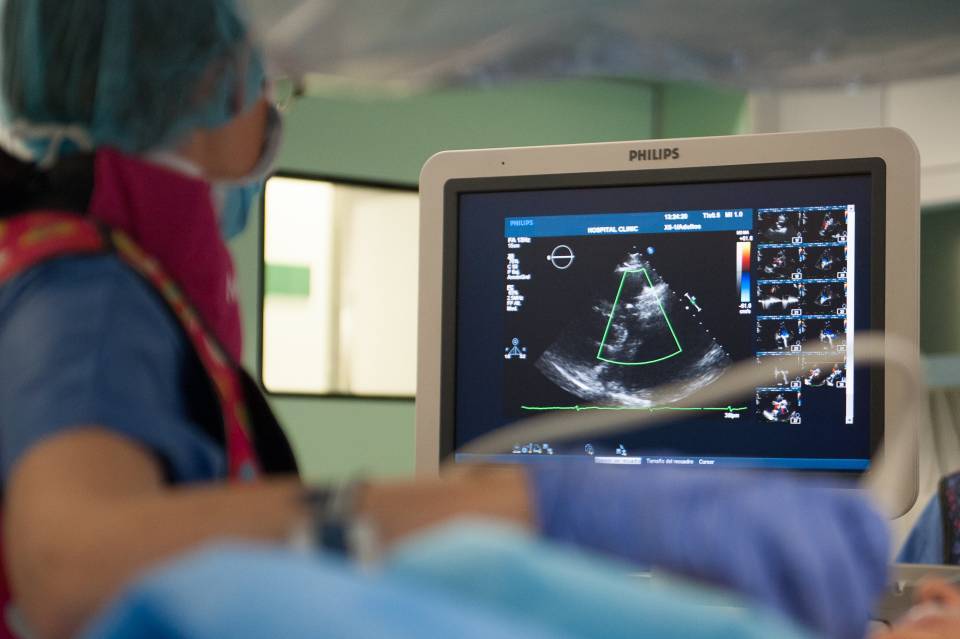Organization - Cardiology Service
The Cardiology Service sees over 15,000 users each year to diagnose and treat heart disease. The Service’s professionals diagnose and treat all types of heart disease and aortic disease in adults. It also works in coordination with the Hospital de Sant Joan de Déu de Barcelona to complete the care offered to paediatric patients with heart disease.
The Service works in coordination with professionals in other healthcare areas in the Heart Failure and the:
The Service has leading professionals specialized in the treatment of patients with chronic coronary heart disease and acute coronary syndromes such as angina pectoris or myocardial infarction; arrhythmias; heart valve diseases, congenital and inherited heart disease as well as the treatment of acute and chronic heart failure, including heart transplants and short and long-term ventricular assist devices.
The Cardiology Service provides assistance in various healthcare areas:
- Acute Cardiac Care Section. It has 16 beds, eight of which are used for patients requiring intensive care, and seven for semi-intensive care. The remaining bed is used for patients with myocardial infarction requiring coronary intervention from other centres in the territory, as part of the Heart Attack Code of Catalonia. Once treated, these patients return to their centre of origin to continue their convalescence. This Acute Cardiac Care area treats patients with acute coronary syndrome, which includes myocardial infarction and angina pectoris, and patients with severe heart failure, as well as patients who come to the hospital’s Accident and Emergency Department with heart problems
- Heart Failure Unit. It takes care of patients with heart failure, especially in the advanced stages, and it is a referral centre for the management of chronic heart failure in AISBE patients. Around 20 heart transplants are performed each year at the hospital. Moreover, it has a specialized consultation unit focusing on inherited cardiomyopathies (hypertrophic cardiomyopathy, dilated cardiomyopathy, or non-compaction cardiomyopathy, etc.), pathologies for which it is a national referral centre (CSUR).
- Cardiac Imaging Section. It has five observation beds for echocardiography and two for ergometry. In collaboration with the Diagnostic Imaging Centre’s Thoracic Section, it has a magnetic resonance imaging (MRI) machine for cardiovascular imaging, thanks to support from the Fundació Daniel Bravo, and it also has a multislice Computed Tomography (CT) scanner. Each year, 14,000 echocardiograms (1,000 transesophageal and the rest transthoracic), 800 cardiac MRI scans, 200 coronary CT scans, and over 2,200 ergometric stress tests are carried out.
- Arrhythmias Section. It has two rooms equipped to preform ablation procedures for supraventricular tachycardia, and radiofrequency and cryoablation ablation to treat atrial fibrillation. Pacemakers are also implanted (dual- and triple-chamber), defibrillators and devices for the prolonged recording of the heart rhythm. The Service is a pioneer in the implantation of wireless pacemakers and subcutaneous defibrillators. Each year around 200 conventional ablations and 150 complex ablations (atrial fibrillation and ventricular tachycardia) are performed. Over 600 pacemakers and defibrillators are implanted each year. There is also a consultation unit specialized in inherited electric heart diseases including Brugada syndrome.
- Haemodynamics and Interventional Cardiology Section. It has two rooms equipped to perform diagnostic coronary angiographies and coronary intervention. Each year, over 2,600 diagnostic catheterizations and 1,300 coronary interventions with stents are carried out. Moreover, around 500 patients are treated annually under the Heart Attack Code of Catalonia programme. For the last 10 years, it has also been carrying out percutaneous treatment of congenital and valve disease, including transcatheter aortic valve implantation (TAVI) procedures, mitral valve repair (MitraClip), the closure of paravalvular leaks and the atrial appendage, closure of atrial and ventricular septal defects, and percutaneous treatment of the patent ductus arteriosus and aortic coarctation.


